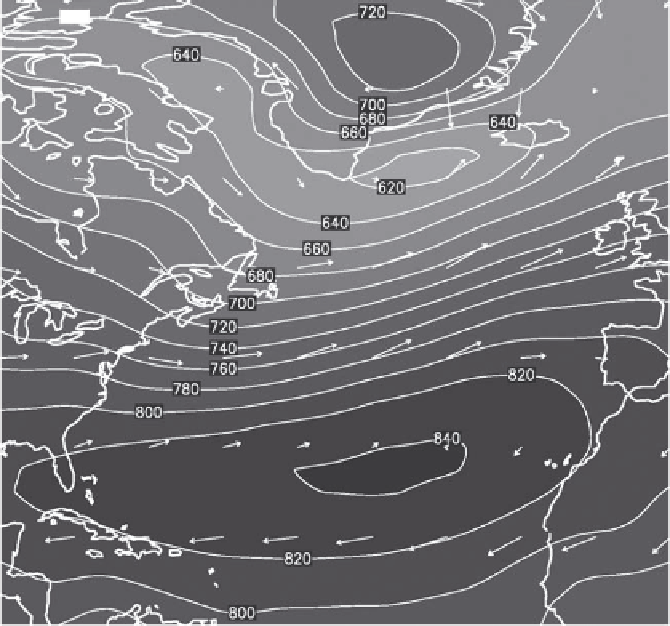Geoscience Reference
In-Depth Information
The
North Atlantic Oscillation (
NAO
)
is a prominent mode of oscilla-
tion in the climate system that results in inverse correlations among variables
over the northern and subtropical Atlantic on decadal time scales. Coherent
fluctuations associated with the NAO are detectable over northern Europe,
northern Africa, and North America, where they contribute to decadal-scale
variability.
In the boreal winter climatology, there is a low off the southern coasts of
Greenland and Iceland in the North Atlantic (see
Fig. 3.8,
which is a close-
up of the North Atlantic section of
Fig. 2.4a
with finer contours). This is the
Icelandic low
. Farther south, off the Atlantic coast of Spain and northern Af-
rica, the climatology shows a region of high geopotential heights known as
the
Azores high
. These pressure systems tend to vary in strength together, so
that when the Azores high is especially strong the Icelandic low is deep. That
covariation is called the NAO and is an example of a
teleconnection
that links
different parts of the climate system over large space scales. Because surface
pressure is a measure of the weight of the overlying air (Eq. 2.1), the NAO can
80°N
720
660
640
70°N
700
680
640
660
60°N
620
640
660
50°N
680
700
720
740
760
40°N
820
780
800
840
30°N
20°N
820
800
10°N
90°W
80°W
70°W
60°W
50°W
40°W
30°W
20°W
10°W
0°
5
Figure 3.8 Climatological geopotential heights at 900 hPA over the North Atlantic.

























